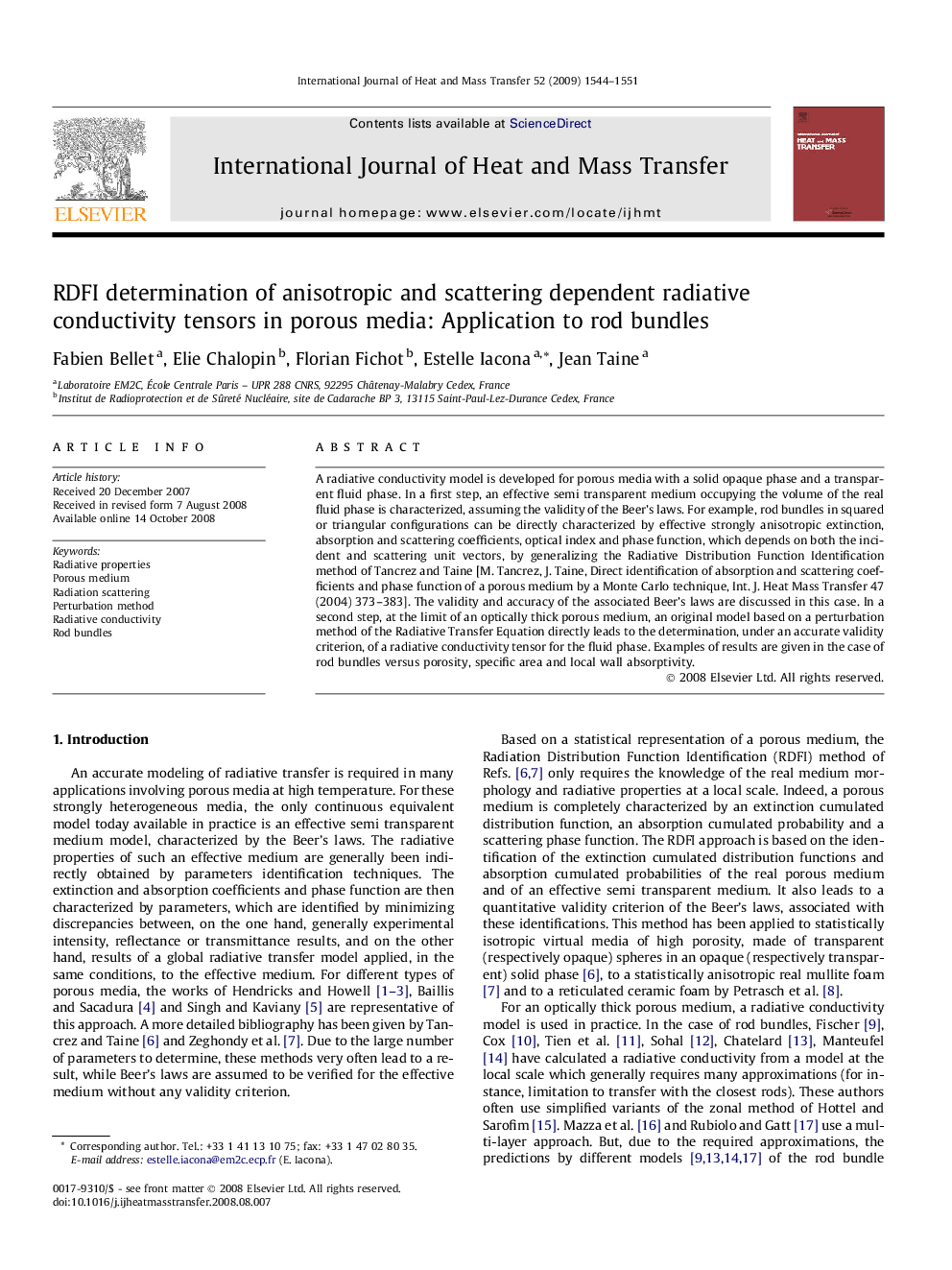| Article ID | Journal | Published Year | Pages | File Type |
|---|---|---|---|---|
| 659763 | International Journal of Heat and Mass Transfer | 2009 | 8 Pages |
A radiative conductivity model is developed for porous media with a solid opaque phase and a transparent fluid phase. In a first step, an effective semi transparent medium occupying the volume of the real fluid phase is characterized, assuming the validity of the Beer’s laws. For example, rod bundles in squared or triangular configurations can be directly characterized by effective strongly anisotropic extinction, absorption and scattering coefficients, optical index and phase function, which depends on both the incident and scattering unit vectors, by generalizing the Radiative Distribution Function Identification method of Tancrez and Taine [M. Tancrez, J. Taine, Direct identification of absorption and scattering coefficients and phase function of a porous medium by a Monte Carlo technique, Int. J. Heat Mass Transfer 47 (2004) 373–383]. The validity and accuracy of the associated Beer’s laws are discussed in this case. In a second step, at the limit of an optically thick porous medium, an original model based on a perturbation method of the Radiative Transfer Equation directly leads to the determination, under an accurate validity criterion, of a radiative conductivity tensor for the fluid phase. Examples of results are given in the case of rod bundles versus porosity, specific area and local wall absorptivity.
